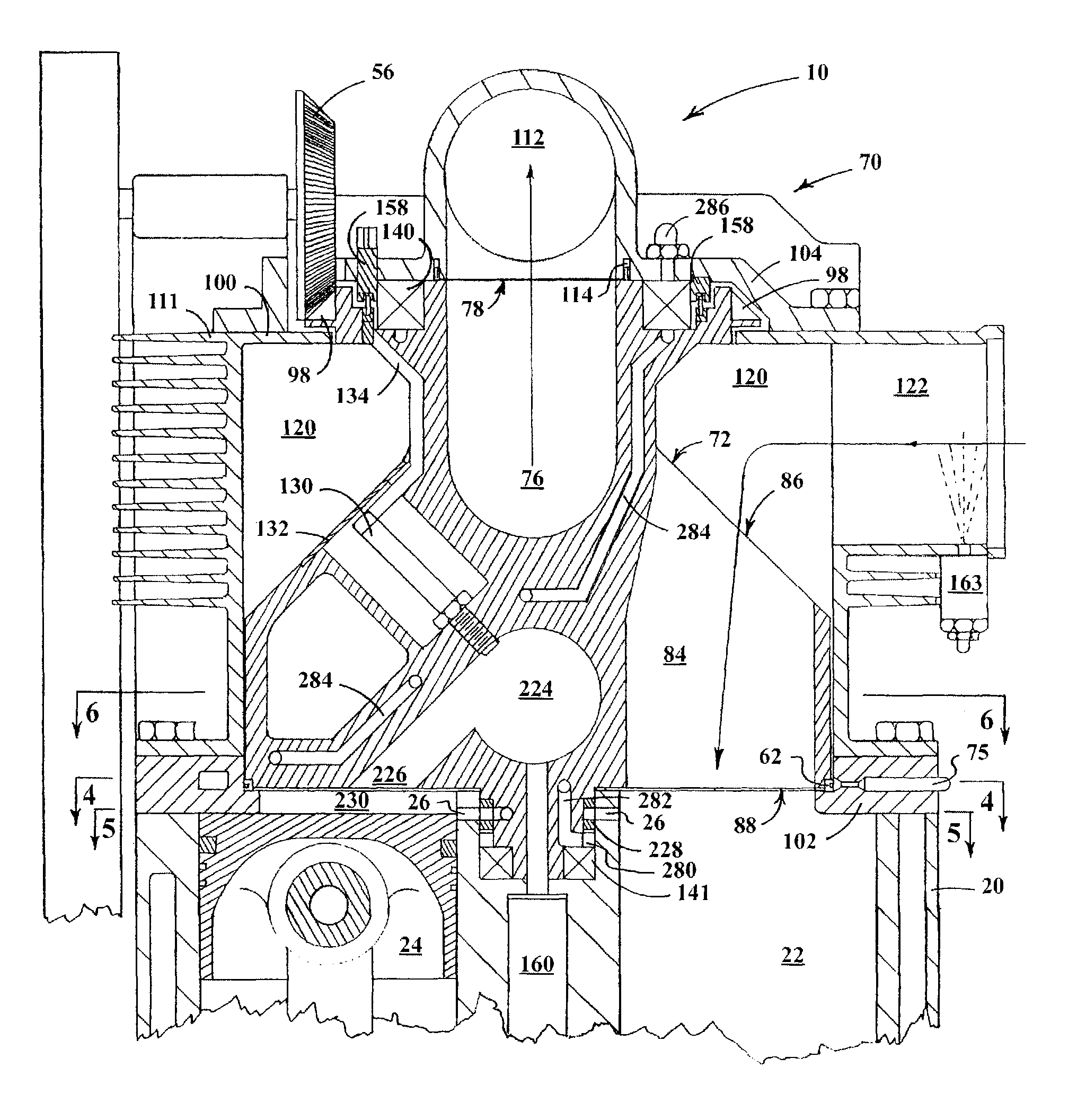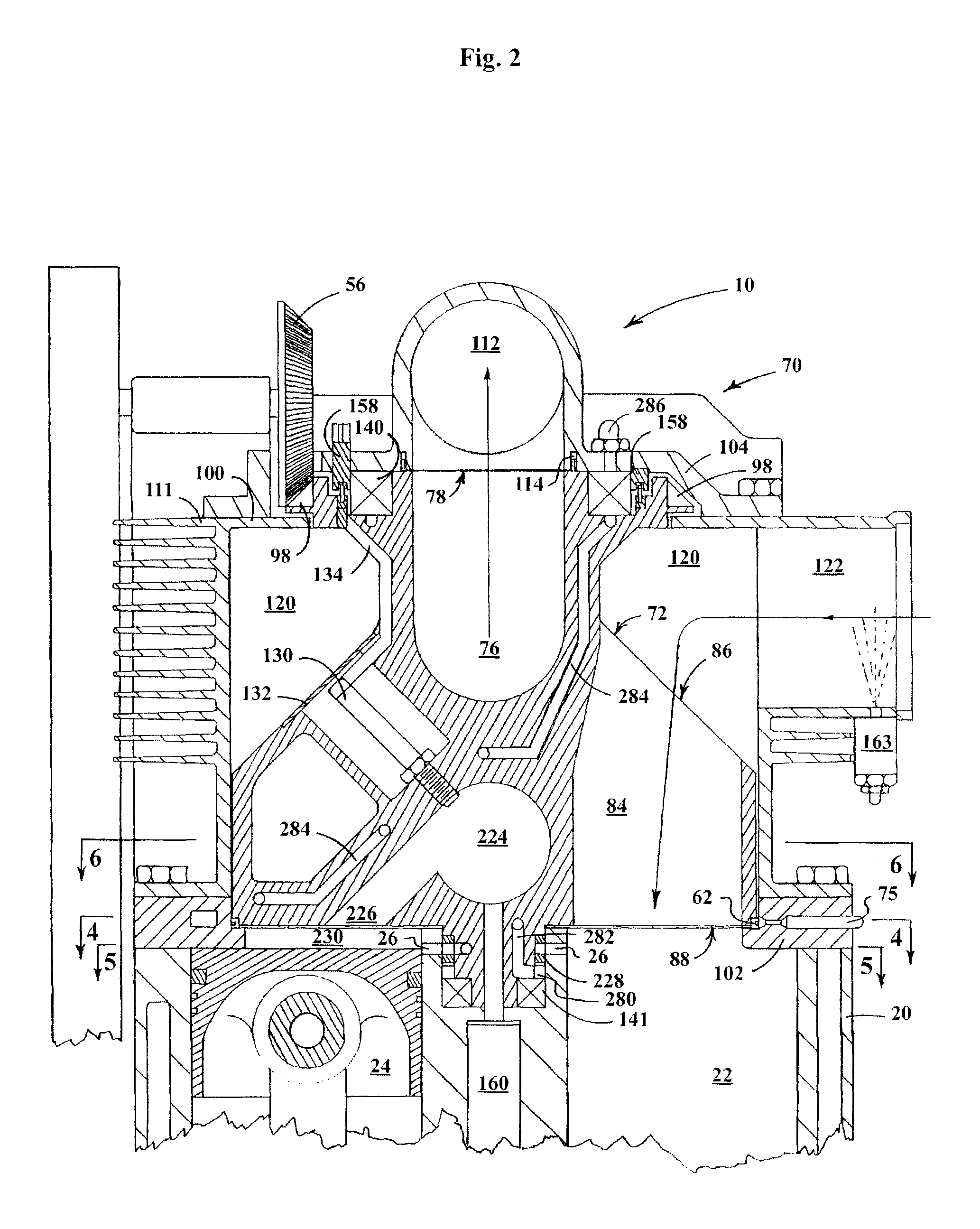Rotary valve in an internal combustion engine
a technology of internal combustion engine and rotary valve, which is applied in the direction of oscillatory slide valve, machine/engine, mechanical apparatus, etc., can solve the problems of reducing engine efficiency, reducing engine efficiency, and reducing engine efficiency, so as to improve volumetric and thermodynamic engine efficiency, increase output and fuel economy, and reduce emissions
- Summary
- Abstract
- Description
- Claims
- Application Information
AI Technical Summary
Benefits of technology
Problems solved by technology
Method used
Image
Examples
Embodiment Construction
[0061]Referring now to the drawings, the preferred embodiment of the rotary valve engine of the present invention is shown therein and indicated generally by the numeral 10. The rotary valve engine 10 includes an engine block 20 having a plurality of cylinders 22 in which reciprocating pistons 24 are mounted. A rotary valve assembly 70 is disposed on the top of the engine block 20 for directing air into cylinders 22 and exhausting combustion gases. The rotary valve assembly 70 comprises a valve housing 100, a single disc-type rotary valve 72, and rotary valve bearing housing 104 for each group of cylinders. The engine block 20 encloses cylinders 22 which are circumferentially spaced about the axis of rotation of rotary valve 72. The center of each cylinder 22 is equidistant from the rotational axis of rotary valve 72. A piston 24 is mounted for reciprocating movement within each cylinder 22. Each piston 24 is connected by a piston rod 38 to a rotating crankshaft 40. Two parallel cra...
PUM
 Login to View More
Login to View More Abstract
Description
Claims
Application Information
 Login to View More
Login to View More - R&D
- Intellectual Property
- Life Sciences
- Materials
- Tech Scout
- Unparalleled Data Quality
- Higher Quality Content
- 60% Fewer Hallucinations
Browse by: Latest US Patents, China's latest patents, Technical Efficacy Thesaurus, Application Domain, Technology Topic, Popular Technical Reports.
© 2025 PatSnap. All rights reserved.Legal|Privacy policy|Modern Slavery Act Transparency Statement|Sitemap|About US| Contact US: help@patsnap.com



